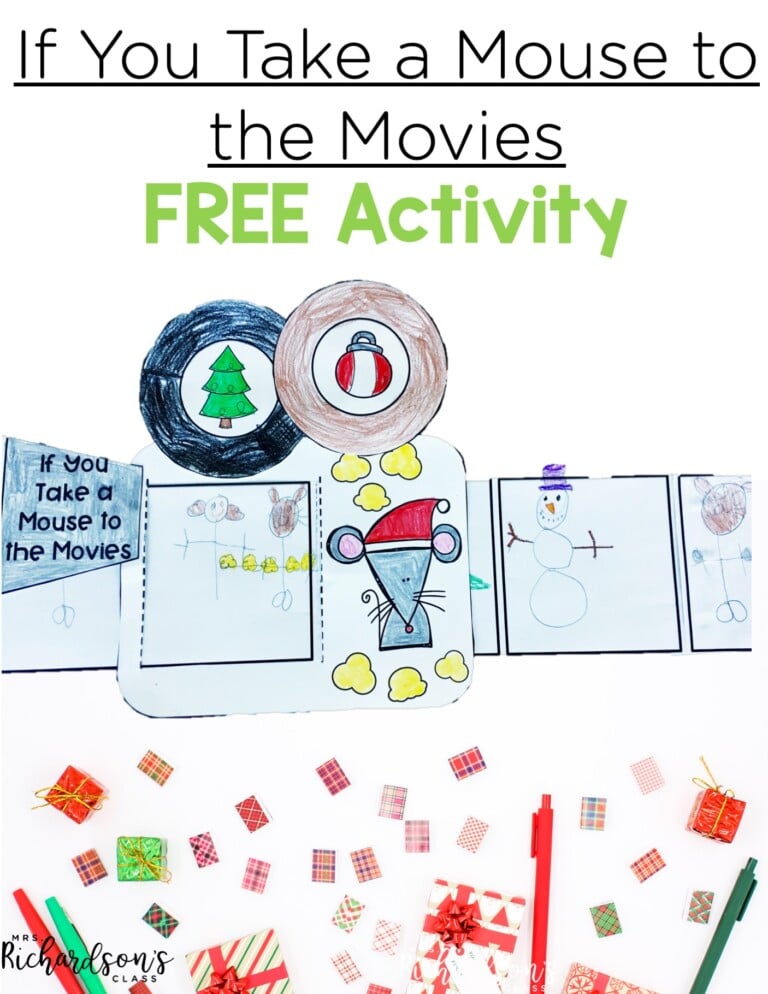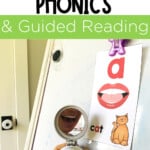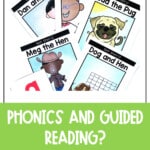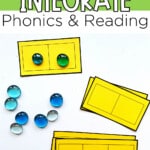

When I first started teaching, one area of my reading instruction that was weaker than others was my phonics instruction. Between all of the reader’s and writer’s workshop requirements, I just couldn’t figure out how to fit in phonics. So it often got put to the side and picked up whenever I had a chance. Many of you have told me you relate to this exact situation! After diving into tons of research, learning through professional development training, and years of teaching experience, I learned how to integrate phonics and guided reading.
By integrating phonics and guided reading, I not only helped my students become better readers, but I also saved time throughout the day by including extra practice in my small groups. Today we’re going to cover four easy ways to integrate phonics practice and guided reading to support the readers in your classroom.
But first, if you’re not sure where to start with your phonics instruction, you can grab a FREE phonics assessment toolkit on my blog HERE. It’s a great tool to help you assess your students’ phonics skills!
The first way to integrate phonics and guided reading is to make sure you have a phonics skill focus for each guided reading lesson. For example, if you are teaching all about the short /a/ sound in your whole group phonics lesson, bring that to the guided reading table. You can review the sound, the grapheme that represents the sound, and practice the mouth formation.
You can do this with a phonics skill card like the one above, but it doesn’t have to be fancy. A notecard also works! Then, use a small mirror so students can practice making the sound and looking at their mouth to see if their mouth matches the skill card (or your mouth!).
You can do this with long vowels, digraphs, vowel teams – you name it! Bringing in a specific phonics skill to practice during guided reading provides students another opportunity to strengthen and reinforce phonics skills that have already been taught. You can do this before reading a leveled text or decodable text.
Another way to reinforce phonics skills at the guided reading table is to pull phonics practice into word work. There are a few different ways to do this.
First, you can do a word ladder. If your phonics focus is the short /a/ sound, students will create a word ladder using short /a/ words.
You will repeat this with words with different beginning and ending sounds so students can practice manipulating letters to build a variety of short /a/ words.
Another way to bring the phonics skill into word work is to do a word sort. For a word sort, you can write words on index cards. Then, have the guided reading group decode the words and read them. Finally, have students sort the cards into categories. For example, if your phonics focus is on the short /a/ sound, students can sort the cards into two piles: words with the short /a/ sound and words without the short /a/ sound.
Students should be listening for the sound and see that the letter that represents the short /a/ sound is there in the word.
Use magnetic letters, letter tiles, or any other letter manipulatives you might have and have students practice building words for the phonics focus. This is a quick, easy-to-implement activity for word work. Plus, you can easily keep students engaged by changing up your letter manipulatives each week.
Finally, you can use sound or Elkonin boxes to help students orthographically map words for the phonics focus. Give students a word and ask them to push a manipulative into a box for each sound they hear. Then, students can write the letter that represents the sound in each box.
You can get FREE sound boxes on my blog HERE.
The third way to integrate phonics and guided reading is to use a decodable reader for your guided reading lesson. The benefit of using a decodable reader is that students get authentic practice with the phonics skill that they have been learning about. A decodable book that has a specific phonics focus, like the short /a/ sound, will have lots of opportunities for students to practice in a meaningful way.
After students have read and discussed their guided reading text, give students a short sentence with several words with the phonics focus. Then, have students write the sentence on a dry erase board, sentence strip, or scratch piece of paper.
We want to see if the output matches the input, meaning that we want students to take the phonics skill that they are learning in reading and reproduce it in their writing.
If you want to learn more about integrating phonics into guided reading or if you need help learning how to use decodable readers in guided reading, I have created Decodable Reader Kits for Guided Reading that you can use to help you get a jump start. Each kit follows a specific phonics progression and has everything you’ll need for guided reading with decodable texts.
I have the following kits available (or save and grab the Decodable Readers Bundle):
Each Kit Includes:
It’s exactly what you need to get the ball rolling once you have your groups formed! If you know and are familiar with the leveled kits I have, then these are the SAME format that you know and love!!
I know guided reading can feel like A LOT! But remember—there is nothing that replaces small group instruction or that supports kids like small group instruction. Pick up your Decodable Readers Kits today to get started!

Want to use the latest research to boost your readers during small groups? This FREE guide is packed with engaging ideas to help them grow!

I’m a K-1 teacher who is passionate about making lessons your students love and that are easy to implement for teachers. Helping teachers like you navigate their way through their literacy block brings me great joy. I am a lifelong learner who loves staying on top of current literacy learning and practices. Here, you’ll find the tools you need to move your K-2 students forward!


| Cookie | Duration | Description |
|---|---|---|
| cookielawinfo-checkbox-analytics | 11 months | This cookie is set by GDPR Cookie Consent plugin. The cookie is used to store the user consent for the cookies in the category "Analytics". |
| cookielawinfo-checkbox-functional | 11 months | The cookie is set by GDPR cookie consent to record the user consent for the cookies in the category "Functional". |
| cookielawinfo-checkbox-necessary | 11 months | This cookie is set by GDPR Cookie Consent plugin. The cookies is used to store the user consent for the cookies in the category "Necessary". |
| cookielawinfo-checkbox-others | 11 months | This cookie is set by GDPR Cookie Consent plugin. The cookie is used to store the user consent for the cookies in the category "Other. |
| cookielawinfo-checkbox-performance | 11 months | This cookie is set by GDPR Cookie Consent plugin. The cookie is used to store the user consent for the cookies in the category "Performance". |
| viewed_cookie_policy | 11 months | The cookie is set by the GDPR Cookie Consent plugin and is used to store whether or not user has consented to the use of cookies. It does not store any personal data. |



3 Responses
I was taught that a child will focus on the first letter of a word to learn it, the end and then the middle last. It is a progression in their learning. I believe if I have a child skipping around to from the middle to the end or middle until the have mastered the first would be an error in instruction. Some children might be ready sooner than others but I feel my struggling readers need consistency until they master this order.
Where can I purchase your phonics skill cards as shown in the article Ways to integrate phonics into guided reading? Thank you!!
Hey Patricia! We’ll send you an email today! We don’t have that exact card in the video for purchase by itself, but we have a few options! Steffani will reach out! 🙂 Thank you for being here and for asking!!